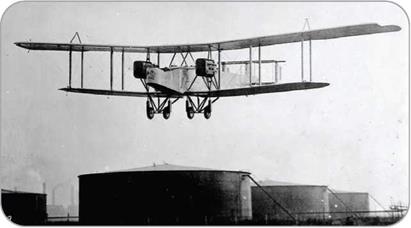Fighter Planes and Pilots
The Eindecker monoplane (1915) developed by Dutch engineer Anthony Fokker (1890-1939) was the first modern fighter plane. It was agile, could fly at 83 miles per hour (134 kilometers per hour), and could dive steeply without its wings breaking off-an accident all too common in less robust aircraft.
Most airplanes of this period were still made of wood and fabric. The first all-metal plane was the J-1, designed in 1915 by German engineer Hugo Junkers (1859-1935). After this model, progress
 INTERRUPTER GEAR
INTERRUPTER GEAR
In 1915, French pilot Roland Garros shot down a German Albatross airplane. Garros surprised his opponent by firing bullets through the propeller. The French Morane plane had deflectors fitted to the propeller blades, which prevented bullet damage. The French plane was later captured by the Germans and studied by Anthony Fokker, who invented an improved system called an interrupter gear. This device basically made the propeller fire the gun, so the spitting bullets synchronized with the spinning propeller.
was rapid. By 1917, the Sopwith Camel, a twin-gun biplane built in Great Britain, could reach speeds of 124 miles per hour (200 kilometers per hour) and climb to a height of around 22,000 feet (6,700 meters).
Fighter pilots, known as aces, developed air combat tactics and maneuvers, such as the Immelman Turn, named after German flier Max Immelman, who was killed in 1916. The most famous fighter ace was the German Manfred von Richthofen, known as the “Red Baron.” Another German pilot, Oswald Boelcke, took the lead in drawing up group tactics and organizing pilots into squadrons. Starting in 1915, pilots flew in formation instead of wandering alone in the skies over battlefields.










